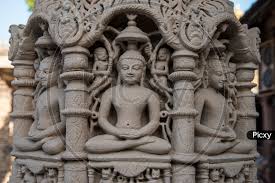Seeing is Believing <-- I wasn't the only one that thought of this
The sense of sight is so important in how we perceive the world because humans rely on sight more than any other sense and sight interacts with all the senses to the highest degree. Darśan: Seeing the Divine Image in India describes how strongly sight is used in the religious contexts of Hinduism. Darśan means "seeing" and is used to describe seeing religious sights. Many Hindus travel the world for the darśan of a place of pilgrimage or the darśan of famous deities. India has thousands of these places and statues that convey images of the various deities worshiped. Western tradition deems this religious practice as idolatry but "anyone who bows down to such things clearly does not understand them to be stick and stones," (21). In India's terms, seeing is knowing and one must see to know. It was also stated that people would believe the person that has "seen it" over the person that has "heard it".



Diana Eck also spoke of the ambiguity of the sense of sight. The term hermeneutics is used to describe the task of understanding and interpreting ideas and texts. She claimed that there needs to be a form of hermeneutics for various sights and what is presented to us through the film-image. I agree with this in part because the purpose of a image must be described so that people do not misinterpret the image. I disagree with this statement at the same time because there are a lot of sights and images that are left up to interpretation. A huge part of creating things is the fact that it can be interpreted in any way and I think this quality should be kept.
I agree with this in part because the purpose of a image must be described so that people do not misinterpret the image. I disagree with this statement at the same time because there are a lot of sights and images that are left up to interpretation. A huge part of creating things is the fact that it can be interpreted in any way and I think this quality should be kept.


I agree with you about the interpretation part because interpretation at its core is pretty much based off of personalities. You can't force people to all have the same personalities, so therefore how could you force people to all have the same interpretations of images? Interpreting sights differently is part of what makes us humans because it demonstrates free thinking and agency.
ReplyDelete